ARTWORK REFLECTION 2.
‘DESIDERIUM’ Intermedia: Performance Art / Video. 2021. (See Spatial Sketch 11 post)
In relation to my overarching theme of Desire and Value, this Performance art video titled ‘Desiderium’ is a portrait of ardent longing. It also reveals a relationship between the spiritual and physical worlds, because ghostly souls with dark corpus shadows are reawakened by loss, and the physical world of light.
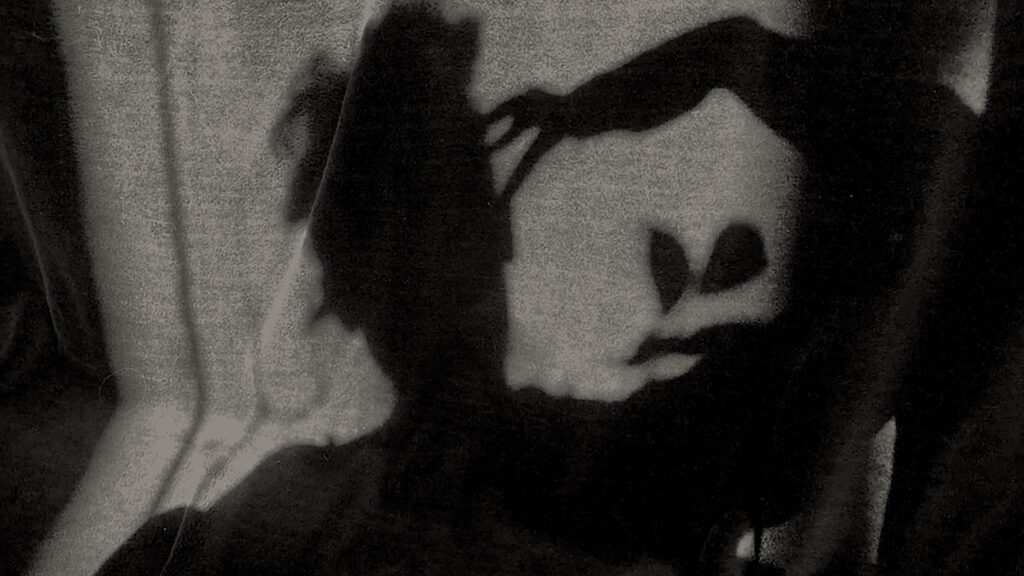
Rhythmically oscillating to and fro, these disfigured forms search with desire to recover their lost senses of See, Smell, Hear, Taste and Touch. Their silhouette shadows dance across soft sunlit surfaces and under watery mangroves, because still installed and activated is their sense of Proprioception. Holding this extra sense, a sense of movement and spatial awareness, the shadows understand how to connect and isolate their limb and torso movement in space. Yet, will these spiritual souls discover and resurrect their senses of touching, tasting, hearing, smelling and seeing? Perhaps by re-activating and aligning their bodies with their lost senses, their brain power will understand, and revive the connection to and from their sense organs.
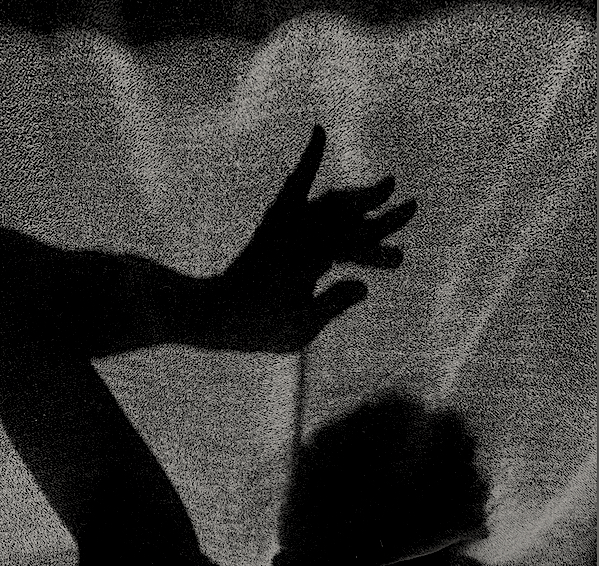
Artist Link: At the beginning of this sculpture brief, I spoke about the Swiss Sculptor Alberto Giacometti’s figurative bronze sculptures as been important to me. They appeal because they are connected to my BODY theme, that has birthed from my original themes of VALUE and DESIRE. The BODY, the senses of the body and the shadows of the body have all arrived from DESIRE, and via the deconstruction of the disused product: my bed, which was once upon a time VALUABLE.

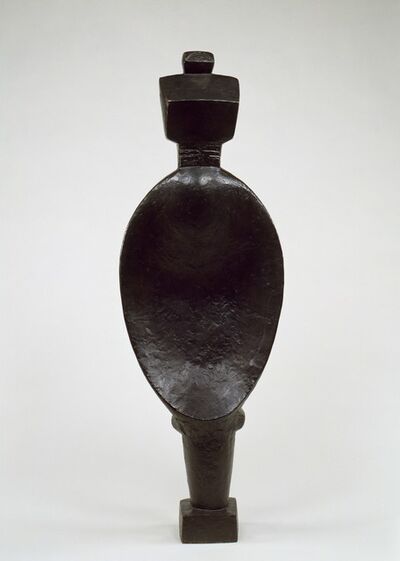
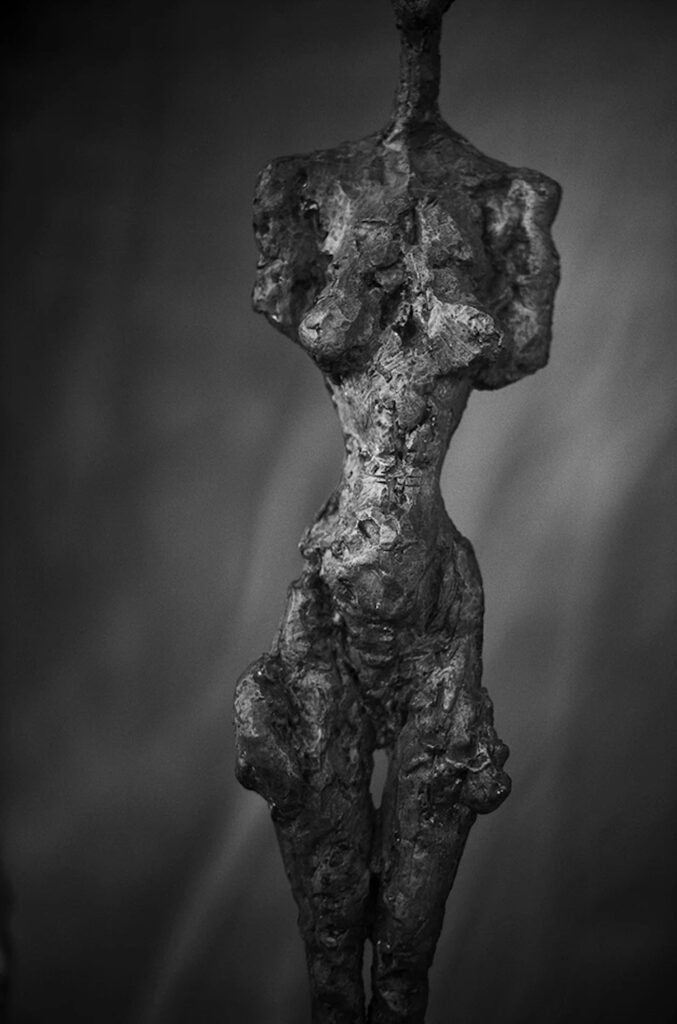
Above, in my video, and the photograph stills, I am isolating body parts, moving as a dancer, and my limb shadows are oddly disjointed, and malformed. Giacometti’s tall, wiry thin body and long limb bronze sculptures are also strangely formed, with some bodies (females) shaped with over-exaggerated features such as the expanded thighs above. Giacometti created both full bodied figures, and limb only sculptures, often appearing feather light. My limbs also appear sinuous and lightweight because of my videoing technique. This appeals to me, as I like the incongruity of my chosen heavy topic or subject of ‘Desiderium’, contrasting with isolated limbs that move lightly. They are searching to recover a loss or a grief which corresponds to a sad, heavy feeling, in comparison to the light weightlessness of their deformed and moving limbs, and torsos. On reflection, I am not quite sure whether my cartoonish speech bubbles spinning in and out in the video are needed, perhaps I should remove these from the video. Yet, this is what I composed in the time frame for this spatial sketch. I am glad that I can keep questioning and reflecting on my work, because one can always improve.
ARTWORK REFLECTION 2a.
‘Illumination Nest within a Kete of Knowledge’ Sculpture: Clay, Hair, Woven Basket, 2021.
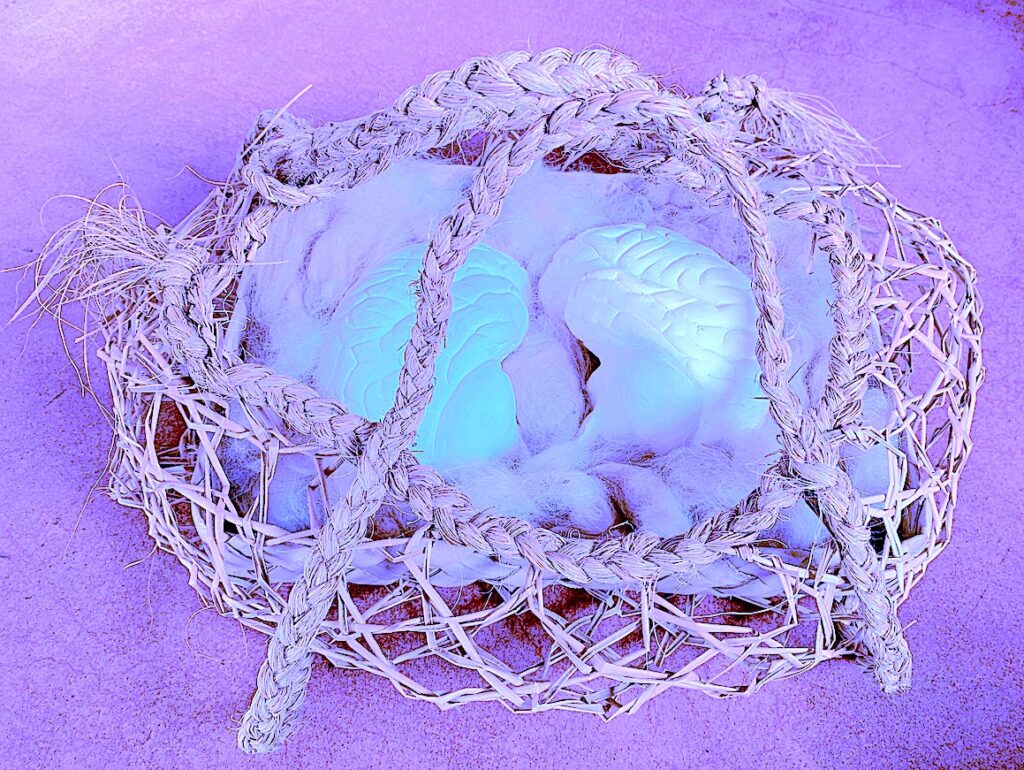
A Kete of Knowledge suggests the carrying of thoughts around in the head. The brain organ is a valued taonga, a piece of precious cargo. Inside this woven basket a pair of pale coloured Cerebral hemispheres sit side by side, cushioned on a carpet, encased and protected. These human brain halves (made of clay) glimmer like glow worms in a cave, projecting outward their celestial lanterns through the woven harakeke basket. Each Cerebral half illuminates different coloured brainwaves, their knowledge and ideas once flowed. Losing their senses, and connection to each other, the kete hemispheres lie next to each other, but not joined in unity like a living brain. Instead their physical state is now separate, stunted from their Sense organ loss with no linkage of pathways.
This work titled ‘Illumination Nest within a Kete of Knowledge’ is linked to the above Performance art video titled ‘Desiderium’, because of the loss of the senses: see, smell, hear, taste and touch. Yet, unlike the moving ghostly spirit shadows in the video searching for their senses, these brain egg shapes in a nest remain still, perhaps dead within this woven coffin. Or is this open shaped Kete a cocoon case showing off its newly hatched wrinkled larvae about to squirm?
The raranga kete is made of muka from harakeke (Phormium spp., New Zealand flax), and woven and plaited with handles to hold and carry. The artwork is presented as a human-made bag, a container to fill objects, or a natural habitat, like a bird’s nest, valued because of its warm, soft, hairy contents. It is holding an inner organ object of the human body, thus making links to brain science and medical brain procedures, plus the generosity of organ donor gifts. These brain halves are contained, and protected, like inside a real skull. Yet, they may never be transformed into a whole brain (because of time restraints, and the brief ends) with an opportunity to be free to fly through the gaping holes of the basket.
The sense of touch is valuable to me, and caressing the clay into smooth and slightly dented textured surfaces has been enjoyable. I thought of the curving wrinkled folds of bedsheets, as I gently cut with tools to make each brain half crease like earthquake crevasses and fissures. The surfaces reveal repeated patterns on each brain half, yet like a real brain, the left brain is not exactly the same as the right brain in all of its patterning.
There is a juxtaposition between the artwork’s objects. The hard shining indented clay duo gently protrudes, shining like snow clad mountainous landscapes inside the woven coarse natural products of the harakeke, and soft animal hair that provides warmth and support.
Questioning thoughts: Is this artwork just an imagined scenario and an artist’s personal representation? Yes.
Is this Kete real? Yes, it is woven from my mother’s hand, and gifted to me. She is a creative educator and weaver, sewer and knitter, therefore using her gift as a found object and incorporating her handiwork into my artwork, creates more meaning for me. My original idea was to join the brain parts together, and erect the whole brain onto a copper pipe (which I could still do, with the right glue). The aim was to insert the pipe into a large, heavy rock to balance the moderately heavy clay brain. Yet, I was unable to complete the first step of drilling a hole into this natural product: sandstone. Compared to the hard Bluestone in my garden, Sandstone is a softer rock, but the drill overheated and started to burn, so I stopped. I am happy with the brain in the basket instead.
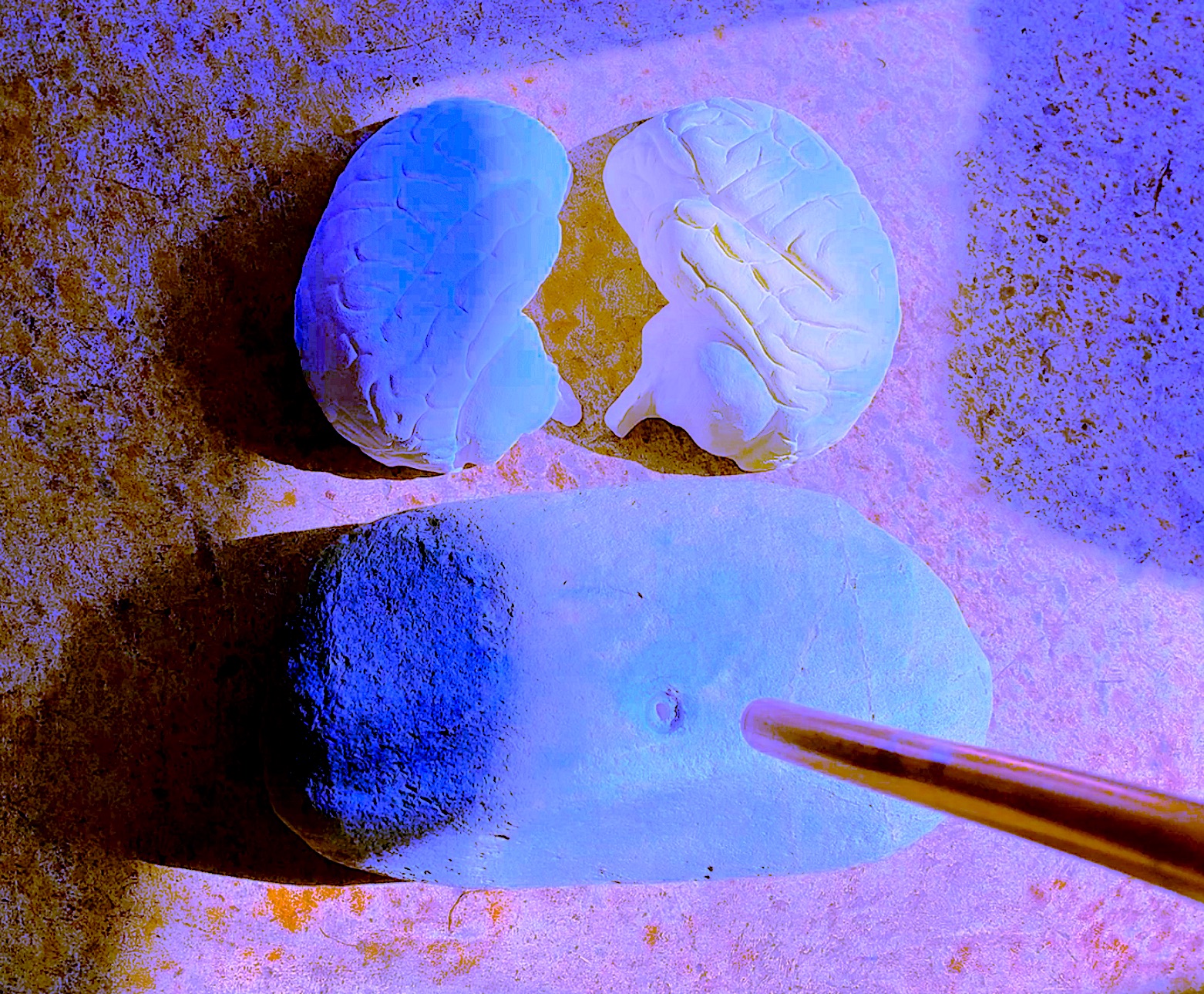
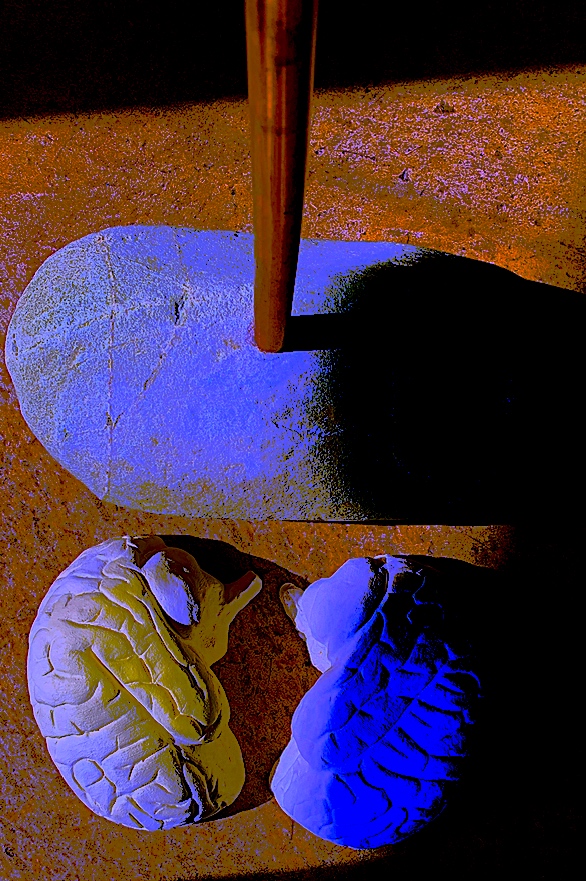
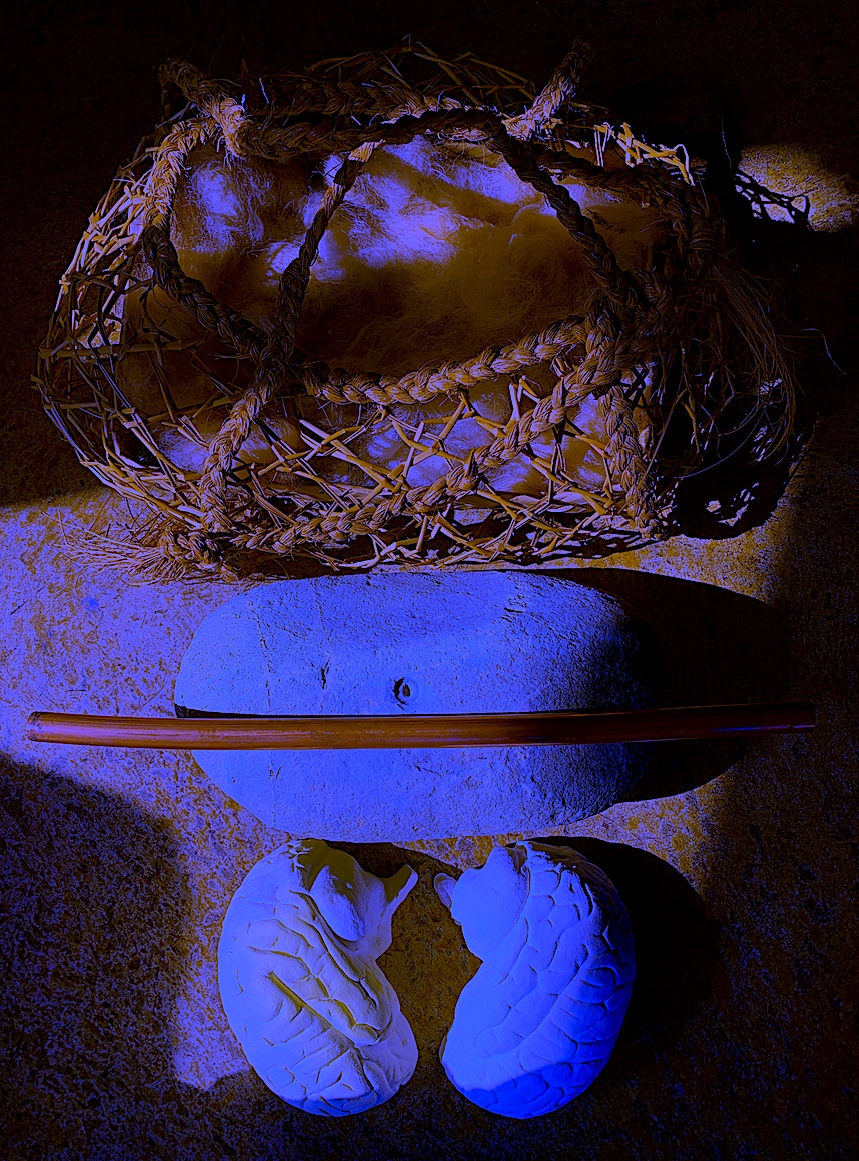
Are the brain parts, and lost senses an essential form of truth? Yes, I sketched a brain and built it by hand, therefore it is a true reality to me. And, no… it is not an exact body organ, just a representation. Yes, a person can lose capacity of their senses at any time, for example their sense of smell with viruses such as COVID 19.
